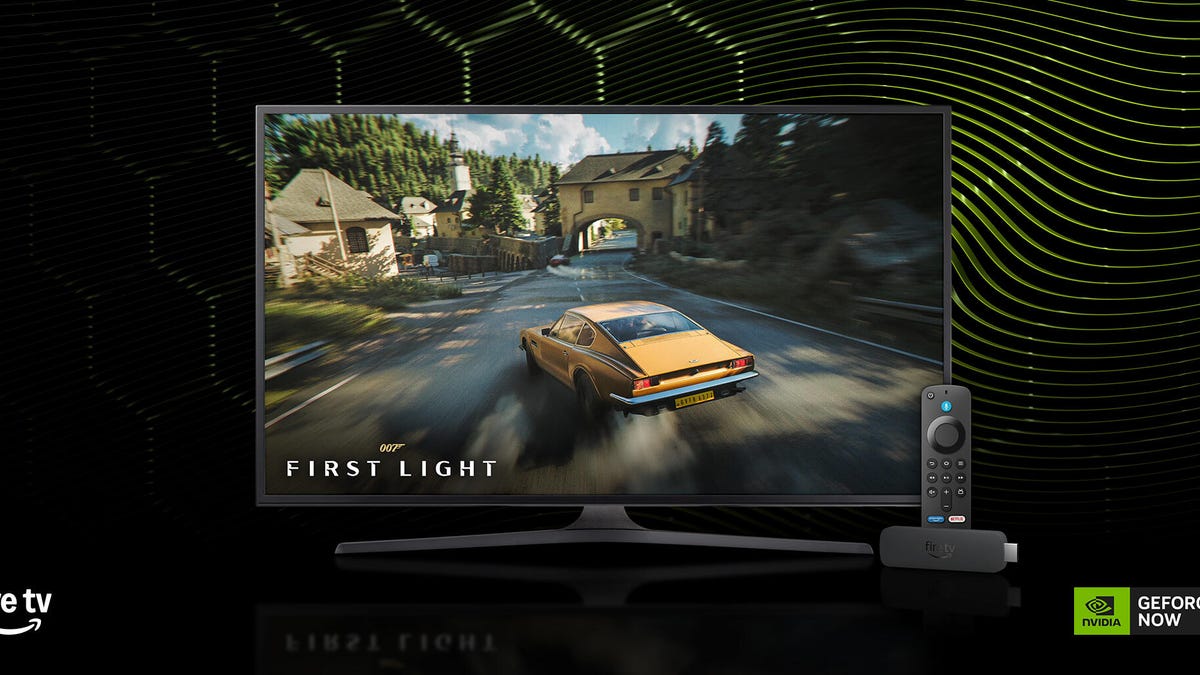Technologies
Meta Quest Pro, Half a Year Later: Caught Between Quest 2 and Quest 3
After I tested the PSVR 2, the Quest Pro seems even more of an enigma, but it may tell us something about the upcoming Quest 3 VR headset.

The Quest 2 headset from Meta succeeded as a self-contained mainstream device for VR gaming. Following that, Meta ambitiously aimed for a lot more with the Quest Pro, a $1,500 headset built around a questionable metaverse strategy. The Pro, already on sale for $500 less than its launch price, felt mistargeted as a pro device, built for a future of work in the metaverse that isn’t here yet… and may never be.
In the almost six months since the Quest Pro came out, the PlayStation VR 2 emerged as another very different headset contender with similarly excellent visuals and eye-tracking. The PlayStation 5-tethered VR headset has absolutely no ambitions at all to be a work device. It just wants to play games in whatever room your PS5 lives in. Meanwhile, Apple is expected to announce its own mixed reality headset in just a few months.
There’s more. The economy has only gotten worse, and Meta’s laid off thousands of people in the last few months. Spending $1,000 on a VR headset is nothing anyone really wants to do, unless it’s somehow able to be some amazing device that can deliver lots of uses all in one. Meta is trying to make the Quest platform that multiuse thing, but it’s still best at one genre: gaming.
However, there are threads to the future. VR headsets can be amazing workout devices. Social experiences in VR can be impressive, transporting and meaningful. Already on hand are 3D art tools and simulation tools that elevate VR to incredibly professional uses. You can cast multiple monitors from your computer and use your VR headset as your magic desktop, but your patience and mileage for that may seriously vary.
The eye-tracking, face-tracking Quest Pro, packing an impressively high-res display, seems like an evolutionary step toward whatever smaller glasses-like things come later. And with software and bridges to computers and phones that will be far more refined. Meta wasn’t wrong with the Quest Pro, in theory, but it was way too early.
Read more: Working on the Quest Pro
By all means, don’t get the Quest Pro. The Meta Quest 3 is expected by the end of this year, and it could very well have a better processor and many of the same features at (perhaps) a lower price. Also, if you’re curious about expensive, bleeding-edge, possibly work-oriented VR devices, Apple’s expected to have its own contender in 2023, too. HTC’s even smaller Vive XR Elite is more portable, and although it doesn’t work with my glasses, it could maybe be a more practically sized travel headset for some. And if you’re looking to elevate your VR gaming beyond the Quest 2, the PlayStation VR 2 is your best bet for its promising graphics and features, even if it is tethered by a cable.
But I’ve started using the Quest Pro more recently, and some things still really stand out.
Wow, the display, and even the audio
The PlayStation VR 2 has a richer and brighter HDR OLED display, but the Quest Pro has the crispest and clearest display of nearly any VR headset I’ve ever used. Meta’s shrunken-down lens system, called pancake optics, combined with a bright LCD display ends up making a notable difference over the Quest 2. I’m appreciating once again how clear text looks, how vivid games appear and how simply clear it all is. It’s not perfect, but if price was no object this would be the ideal display for everyday use. The lenses don’t have any ribbed lines, either, unlike the PlayStation VR 2’s Fresnel lenses and several other VR headsets. I appreciate that it fits over my glasses, as always, even though the headset fit isn’t as loose and forgiving as that of the PSVR 2.
I also appreciate the audio, surprisingly. After using the PSVR 2’s earbuds, which have to be inserted every time, I’m enjoying all over again how Meta’s headsets just project sound from the headbands with no separate headphones needed at all. The Quest Pro’s audio sounds better than the PSVR 2’s earbuds, to my ears, even though the audio is open air and I can hear everything else in the room too. Its blend of VR sound and the everyday world feels like the sort of challenge future AR glasses and mixed reality headsets are going to have to solve, and Meta’s one of the few doing it as well as it can be done right now.


I moved around a lot with the Quest Pro in a demo last fall. It’s much easier to be mobile in it than on something tethered.
MetaIt’s refreshingly relaxed and wireless
Slipping the headset on over my eyes has always felt like putting on a pair of magic lenses. I think of this, the way they rest over my glasses, the way I can casually walk around the room playing Walkabout Mini Golf and not feel worried about bumping into anything. I appreciate the heightened room awareness, partly because I can see the room around the sides of the headset. Also, with its smaller controllers and naturally wireless self-contained design, I just enjoy slipping into it.
It’s also bulky
At the same time, wow, the Quest Pro is awkwardly shaped. It’s big and has a large headband, and needs its own special charger dock to charge up its headset and the controllers. It just feels like a delicate sports car you need to put back carefully in the garage every time. That’s unlike the Quest 2, which is smaller overall despite its larger front, can be tucked more easily into a carrying case, and doesn’t have the same glossy visor design. Also, because I need to charge the Pro every time I use it, it also seems more complicated to store than the also-large (but light) PSVR 2, which can simply be tucked on a shelf.


The Quest Pro (left) is smaller in some ways than the Quest 2 (right). But that stiff headband makes it hard to pack down into a bag.
Scott Stein/CNETMeta never advanced the software enough
The Quest Pro really is just a Quest in terms of apps and OS, so much so that you may wonder why it’s even needed as an upgrade. Backward compatibility is a great thing, but there was an opportunity here to rethink the interface, push mixed reality more and create a truly new class of apps. There are Quest Pro-optimized apps that use the color passthrough cameras and mixed reality features (and eye and face tracking) to different effects, but most of these extras feel tacked on, not quite necessary, gimmicky.
Eye and face tracking aren’t integral to Meta right now, which may be a huge relief to those seeing these sensors as doorways to a whole unsettling level of observational data collecting or more targeted advertising. But that also means the way these technologies are used doesn’t feel necessary, either, unless you’re an aspiring Quest developer who wants to make eye and face tracking apps. When I’ve tried eye and face tracking to animate my avatars, it’s had mixed results, and it sometimes made my virtual self look weirder. Meta can already use AI to help animate avatars based on voice cues, and those work well enough.
The PSVR 2, by comparison, uses its unique features more fully. Eye tracking is already used extensively in many launch games for foveated rendering that improves graphics results, and some games use eye tracking for controls, too.
There’s also a big gap between the phones we use and the VR/AR headsets of the moment. Qualcomm is trying to bridge this gap, and Apple, Google and Samsung will likely try to do the same. Meta has its own phone app that works with the Quest 2 and Quest Pro, but it’s not been rethought for Pro users at all. I don’t feel like I can output my VR work any more easily or intuitively, and I don’t feel like I can use apps or software I rely on all the time in easy, logical ways on the Quest Pro. When will it feel like a true extension of my laptop or my phone? I don’t know.
Meta did add an experimental hand tracking feature called Direct Touch that allows for your fingers to «press» buttons by pressing them in-air, or to press keys on hovering virtual keyboards. This more direct interaction mimics what Microsoft has already done on the HoloLens 2. Still, it’s not reliable enough to use for actual writing, and still feels a little awkward. The Quest Pro is still, mostly, best used with the controllers.
There are plenty of creative and work tools on the Quest Pro, but nearly all of these are things you can also use on the Quest 2, minus those eye tracking and better-looking mixed reality options.
The Quest 3 should get many of the Quest Pro’s features
Expect Meta’s next headset to adopt many of the Quest Pro’s best qualities: the color passthrough cameras and mixed reality capabilities, the smaller lens system and crisper visuals, and on top of that, likely a faster, better processor. The Quest 3 may not have eye tracking, but you probably won’t need that, anyway. It may also come with controllers similar to the Pro’s, or at least work with them. (I like how the Pro controllers are smaller, but I also don’t like how they need more frequent charging.)
The Quest 3 is expected to cost somewhere around $500, and if that’s true, it’ll be half the price of the Quest Pro. Even though I appreciate the Pro’s high-quality visuals and fit, there’s absolutely no reason you should buy one, even at its currently lower but still expensive $1,000 price.
The future is not just about VR: it’s about smaller glasses-like devices that will eventually be wearable all day, and in the meantime will work as mixed reality goggles at home. Meta’s hardware is moving on that path, but in early 2023, VR is still largely for gaming, and the Quest Pro is not a headset made for gamers, and that should tell you all you need to know.
Technologies
We’ve Found the Coolest, Most Futuristic Tech at CES 2026. And It’s Only Day 1
We’ve just begun trawling for our favorite cutting-edge technology. But we’ve already found some neat stuff.

We have people all over the show floor — and beyond — at CES, looking for the most interesting, innovative and cutting-edge tech out there. A ton of useful new information is also available, which you can find on our CES 2026 live blog and in our CES hub, but that’s boring.
It’s only the first day, but we’ve already gawked at some of the CES staples, like robots, electronic toys, phones and more. I’ll be back here to top off our amazing finds regularly throughout the show.
Technologies
Nvidia’s Gaming Announcements at CES 2026 Are All About the Software
DLSS 4.5 brings dynamic multiframe generation to GeForce RTX 50-series cards and improved Super Resolution upscaling for the rest of us.

While the Nvidia keynote at CES 2026 on Monday afternoon brought the usual cavalcade of robots, autonomous driving models and massive commercial hardware for AI, its low-key gaming news didn’t get to join the party. Given there’s no new gaming hardware, it’s understandable. But Nvidia did launch version 4.5 of its DLSS upscaling and optimization technology, bringing dynamic multi-frame generation and an upgraded transformer model for its super-resolution upscaling that optimizes for high frame rate 4K gaming, notably the latest crop of 240Hz 4K displays. The company also introduced new capabilities for its RTX Remix modding platform and launched apps for Linux and Amazon Fire TV.
Don’t miss any of our unbiased tech content and lab-based reviews. Add CNET as a preferred Google source.
Nvidia’s multi-frame generation works within DLSS to extrapolate multiple frames from a single rendered frame, and in conjunction with the upscaling, to raise game frame rates and resolution. (Sadly, it works only on RTX 50 series cards.) In 4.5, it goes from generating up to four frames for each rendered frame to six frames for each, and it can dynamically target the refresh rate of your monitor to adjust the render-to-generated ratio on the fly to maintain consistent speed and latency.
The new model for Super Resolution has fewer temporal artifacts — less ghosting, improved antialiasing and better clarity — and works with any RTX graphics card. On the Blackwell cards, it helps with the multi-frame generation image quality as well.
G-Sync-capable monitors also potentially get a new feature, Ambient Adaptive Technology. (It requires a light sensor on the monitor, which is rare on desktop monitors but pretty common on general-purpose laptops.) As the name implies, it can automatically adjust color temperature and brightness based on environmental conditions.
In addition to AAT, Nvidia announced that the G-Sync Pulsar monitors it launched in September 2024 will soon be available. In case you’ve forgotten, Pulsar improves clarity on fast-moving games played on high refresh-rate monitors.
While the company’s RTX Remix platform for modding games with AI-generated assets isn’t for everyone, Nvidia’s added a new capability, Remix Logic, that sounds awfully cool. In essence, it lets a game make decisions about what assets to use — like specific weather or particle behavior — based on things happening within the game.
Technologies
Today’s NYT Mini Crossword Answers for Tuesday, Jan. 6
Here are the answers for The New York Times Mini Crossword for Jan. 6.

Looking for the most recent Mini Crossword answer? Click here for today’s Mini Crossword hints, as well as our daily answers and hints for The New York Times Wordle, Strands, Connections and Connections: Sports Edition puzzles.
Need some help with today’s Mini Crossword? The Across clues were tricky, but the Down clues helped me fill in the blanks. Read on for the answers. And if you could use some hints and guidance for daily solving, check out our Mini Crossword tips.
If you’re looking for today’s Wordle, Connections, Connections: Sports Edition and Strands answers, you can visit CNET’s NYT puzzle hints page.
Read more: Tips and Tricks for Solving The New York Times Mini Crossword
Let’s get to those Mini Crossword clues and answers.
Mini across clues and answers
1A clue: When pigs fly
Answer: NEVER
6A clue: Courtroom excuse
Answer: ALIBI
7A clue: «That’s a ___!» («Seems unlikely!»)
Answer: BIGIF
8A clue: Cash register compartment
Answer: TILL
9A clue: She, in French
Answer: ELLE
Mini down clues and answers
1D clue: Catch, as a crook
Answer: NAB
2D clue: Designation for prolific Yelp reviewers
Answer: ELITE
3D clue: Candlelight ___ (solemn observance)
Answer: VIGIL
4D clue: Online invoice
Answer: EBILL
5D clue: Piece of equipment in a Winter Olympics biathlon
Answer: RIFLE
Don’t miss any of our unbiased tech content and lab-based reviews. Add CNET as a preferred Google source.
-

 Technologies3 года ago
Technologies3 года agoTech Companies Need to Be Held Accountable for Security, Experts Say
-

 Technologies3 года ago
Technologies3 года agoBest Handheld Game Console in 2023
-

 Technologies3 года ago
Technologies3 года agoTighten Up Your VR Game With the Best Head Straps for Quest 2
-

 Technologies4 года ago
Technologies4 года agoBlack Friday 2021: The best deals on TVs, headphones, kitchenware, and more
-

 Technologies4 года ago
Technologies4 года agoVerum, Wickr and Threema: next generation secured messengers
-

 Technologies4 года ago
Technologies4 года agoGoogle to require vaccinations as Silicon Valley rethinks return-to-office policies
-

 Technologies4 года ago
Technologies4 года agoOlivia Harlan Dekker for Verum Messenger
-

 Technologies4 года ago
Technologies4 года agoiPhone 13 event: How to watch Apple’s big announcement tomorrow

